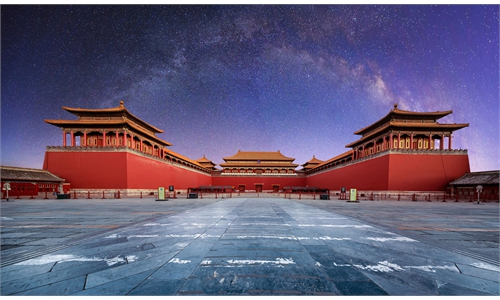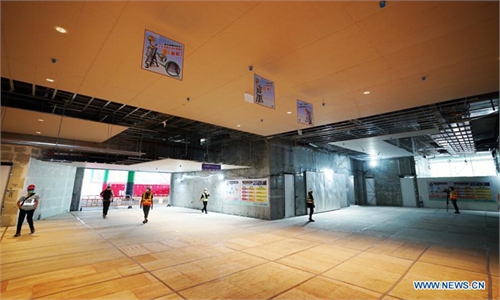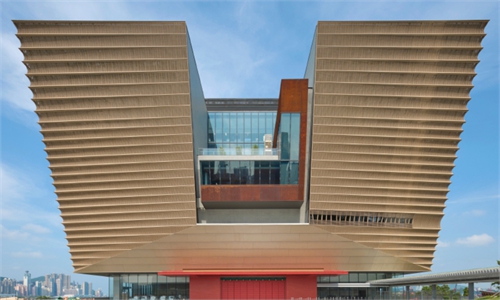ARTS / ART
Hong Kong Palace Museum prepares for opening ceremony, echoes ancient décor of Forbidden City
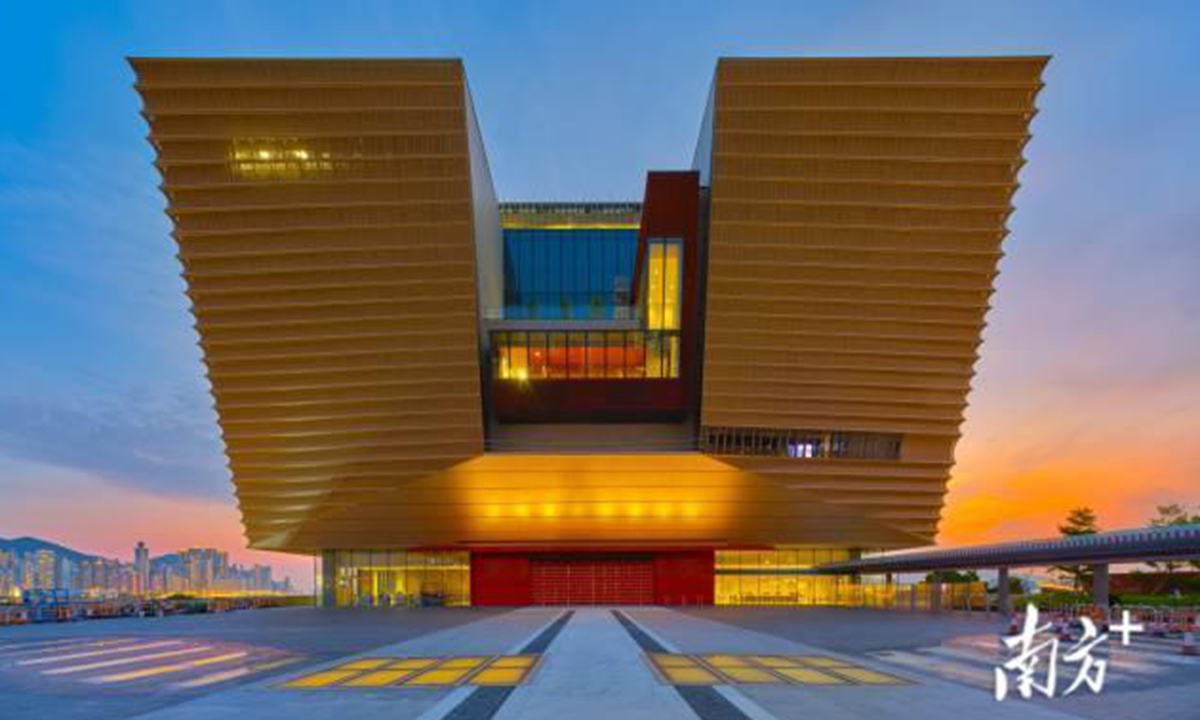
The outlook of Hong Kong Palace Museum Photo: from the web
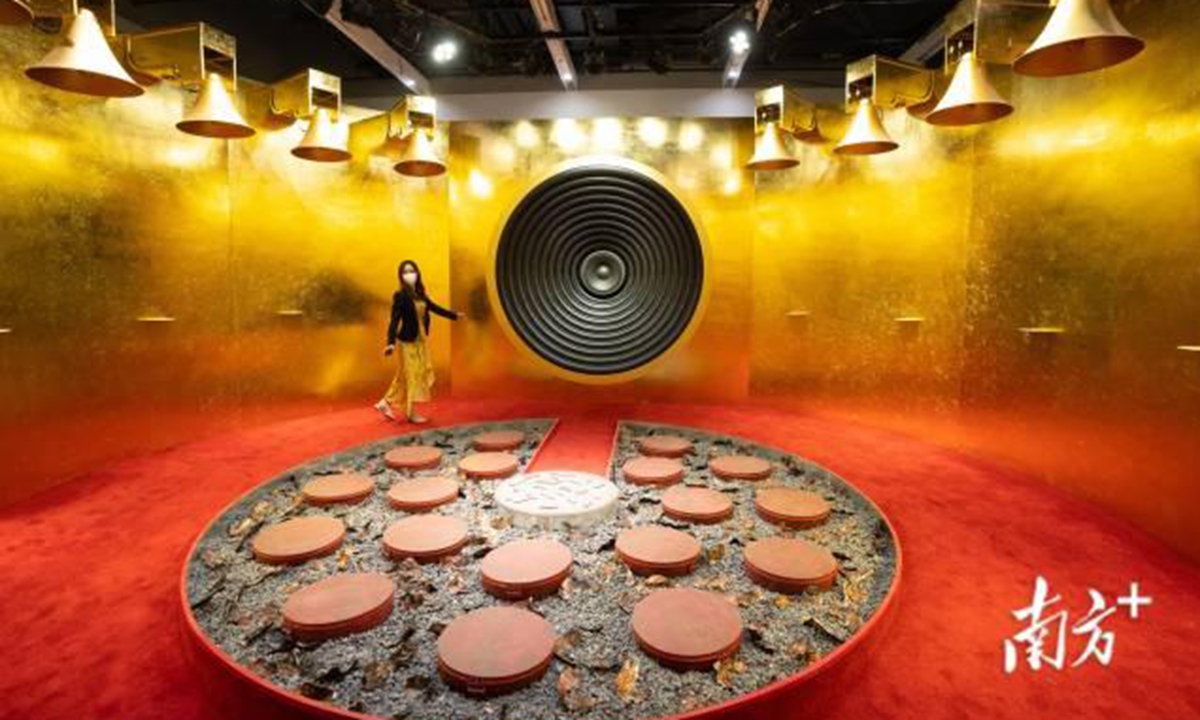
Photo: from the web
The Hong Kong Palace Museum is set to hold an opening ceremony hosted by the Hong Kong Special Administrative Region (HKSAR) government and China's Ministry of Culture and Tourism on Wednesday. The museum will be opened to the public on July 2, after which more than 900 cultural relics from Beijing will be displayed for one to three months in total.
Among the 914 artworks and relics on loan from the Beijing Palace Museum, 166 of them are first-class cultural relics recognized as national treasures, accounting for 18 percent of all items on display at the museum in the West Kowloon Cultural District. This is the largest loan by the Palace Museum to another institution since its establishment in 1925.
The opening exhibition is being co-curated by both museums and many of items on display will be exhibited for the first time in Hong Kong.
The borrowed relics, which will be displayed across nine galleries inside of the museum, also cover a wide range of art from paintings and drawings to calligraphy and embroidery. It will also showcase jewelry, sculptures, ancient books and architectural works covering China's 5,000 years of history.
In a display list obtained by the Global Times, well-known artworks such as the painting Rhapsody on the Luohe River Goddess by artist Gu Kaizhi of the Jin Dynasty (265-420) and Autumn Colors among Rivers and Mountains by Zhao Boju of the Song Dynasty (960-1279). The former was adapted from an eminent long-celebrated lyrical poem Rhapsody on the Luohe River Goddess (or Luoshen Fu) from more than 1,800 years ago, while the latter is famous for presenting the recognizable landscape in blueandgreen colors .
Other national treasures also include ceramics such as an extremely rare Ru kiln brush washer from the Northern Song Dynasty (960-1127), and an imperial jade seal used by emperors during the Qing Dynasty (1644-1911).
To protect the fragile relics on loan, advanced technology and professional teams have been sent to assess the relics that have arrived.
Song Jirong, head of the restoration workshop at the Palace Museum, noted during an interview in March that to ensure Hong Kong people can enjoy the finest cultural relics, antiquity experts at the Palace Museum are assessing potential exhibits in batches. They will use high-tech equipment such as CT and infrared spectroscopy to conduct thorough examinations.
The museum also has a cultural-relics maintenance team to ensure that the antiquities are kept in good condition. The Palace Museum will also dispatch experts to Hong Kong regularly, Song added.
Another Forbidden City
The Hong Kong Palace Museum has nine exhibition halls featuring a distinctive architectural design that echoes the style of Beijing's Forbidden City, which houses the Palace Museum.
The outside of the museum is modeled after a huge square bronze cauldron known as ding. The colors, however, are the same beige and dark red tones with cool gray embellishment of the Forbidden City.
Light colors and earthen colors set the main tone inside the museum. The main entrance of the museum and each exhibition hall is decorated with vermilion, the same as the walls of the Forbidden City.
Spatially, the Hong Kong Palace Museum combines modern urban architectural style with the concept of the central axis, a major feature of the Forbidden City. The central axis runs through the building, leading visitors to the upper floors. The atrium ceiling looks like the glazed tiles on the roofs of the Forbidden City.
Around 7,000 visitors are expected to head to the museum on the opening day.
Global Times
